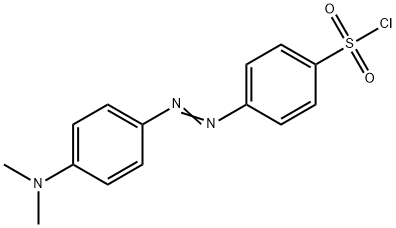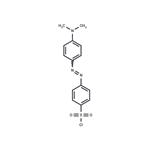Amino groups are common to many biological compounds and many amines used in pharmaceuticals. Most of these compounds show weak absorption in direct HPLC analysis with UV-VIS detection. However, strongly absorbing derivatives of amines can be easily detected by HPLC with high sensitivity even when present at low concentrations. Primary and secondary amino groups are usually derivatized as aromatic derivatives by nucleophilic substitution reactions using reagents such as arylsulfonyl chlorides.
4-(Dimethylamino)azobenzene-4′-sulfonyl chloride, a well-known UV-labeling agent, is generally used for the derivatization of N-terminal amino acids, imidazole derivatives, polyamines, etc. prior to their chromatographic determination due to the former′s capacity to covalently bind to the substrates. Its derivatives typically absorb UV radiation between the range of 436-460 nm. This method of derivatization is regarded as superior compared to other methods owing to the simplicity of the procedure, high stability and reproducibility, best resolution of the analytes, etc.

